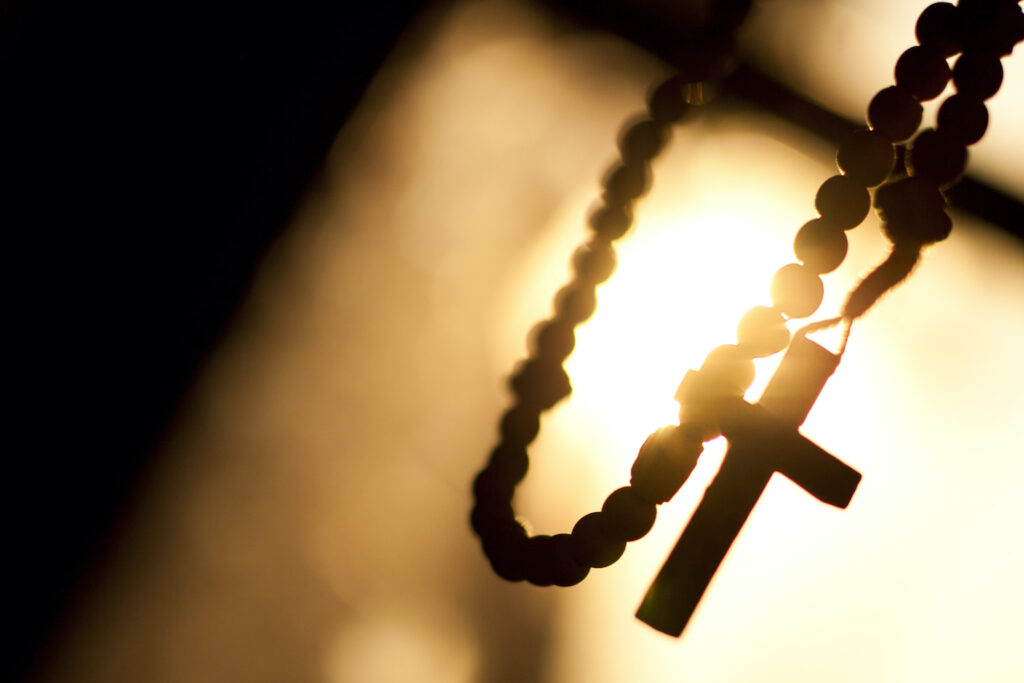Last month as we prepared to announce our Independent Reconciliation Program (“Program”) for those who, as minors, were sexually abused by clergy in our diocese, I traveled around the diocese and met with our priests, deacons, school principals and college campus leaders to explain the Program and why we were implementing it before it was announced publicly.
Because this is a jubilee year in our diocese, we prayed the diocesan bicentennial prayer. I then read Luke 4:14-21 in which Jesus reads from the prophet Isaiah:
“The Spirit of the Lord is upon me, because he has anointed me to bring glad tidings to the poor. He has sent me to proclaim liberty to the captives and recovery of sight to the blind, to let the oppressed go free, and to proclaim a year acceptable to the Lord” (Is 61:1-2).
That year of favor was a jubilee, a time for restoring people to the heritage that they had lost during the previous 50 or 100 years. A significant aspect of any jubilee is reconciliation — intentionally reaching out to those who have been alienated, distanced or broken over injustices committed in the past.
What Jesus proclaimed in the synagogue applies to us as Church. In our diocese’s bicentennial jubilee year, we seek to reconcile with members of our faith community who, as minors, were sexually abused by clergy. It is one of my responsibilities to reach out to them, to attempt to seek reconciliation.
The Independent Reconciliation Program is a means — not the only one — to try and repair the injury and overcome the estrangement that has occurred due to the clergy sexual abuse of minors. Other means have included my Sept. 14, 2018 pastoral letter, “From Tragedy to Hope,” the regional Masses of Atonement, local listening sessions with lay leadership and the faithful in September and October of that year, and the publication in February 2019 of the list of priests against whom there are credible and substantiated claims of child sexual abuse.
When I speak about reconciliation with victim survivors of clergy sexual abuse, I do so in the context of the sacrament of reconciliation which includes confession of sins, contrition and reparation. Those three elements are necessary for the reconciliation we seek with victim survivors of clergy sexual abuse.
When we confess our sins, we lift up into the light of Christ the injury that we have inflicted and the affects that resulted from it. With the abuse crisis, we have done that by being transparent, thorough, honest and straightforward about what occurred. We have taken responsibility for it, speaking about it truthfully and charitably.
Authentic contrition for anyone seeking reconciliation requires penitents to make efforts to ensure that they are not repeating the same behavior. They are going to do what they can to demonstrate they’ve made a turn for the better.
All the things we have done during the past 18 months regarding the sexual abuse crisis are evidence of that contrition. We have increased the staff in our Office of Safe Environment and published the first report about its work, named the credibly accused clergy, published names of Diocesan Review Board members, reestablished the Diocesan Pastoral Council to provide greater lay involvement to me on priorities of the diocese and instituted EthicsPoint – a third-party entity where employees, volunteers, clergy and parishioners of our diocese can submit concerns about financial, administrative or human resource matters. We are also revising our diocesan ethical conduct policy. These are all an expression of our contrition and sorrow as we have a metanoia — a change of heart, or a change of direction.
Reparation can be made through any number of actions. Prayer, seeking reconciliation with those we’ve injured, giving generously to the poor — it can be any action that shows a genuine attempt to repair the damage we have done.
Those three components of the sacrament of reconciliation are a model for how to address the injury caused by clergy sexual abuse. We have confessed it, shown that we are changing our ways, e.g., through our insistence on protecting our young people in all Church environments, to make sure we are doing all we can so that they are never abused, and we are offering ways to repair the harm done by abuse.
The Independent Reconciliation Program is part of the commitment I made in 2018 that there be some tangible sign, some practical expression of our desire to repair the damage that has been done. The Program is one form of reparation, but not the only one.
For victim survivors who feel that their voluntary participation in this Program is appropriate, it is my hope and prayer that the monetary payment, which we offer out of justice and charity, might help them in their healing.
For our bicentennial to truly be a jubilee year, reconciliation must be a defining aspect of it. Our willingness to do all we that can to reconcile with those who were sexually abused by our clergy is our witness to what Scripture teaches, what we believe and what we practice.

